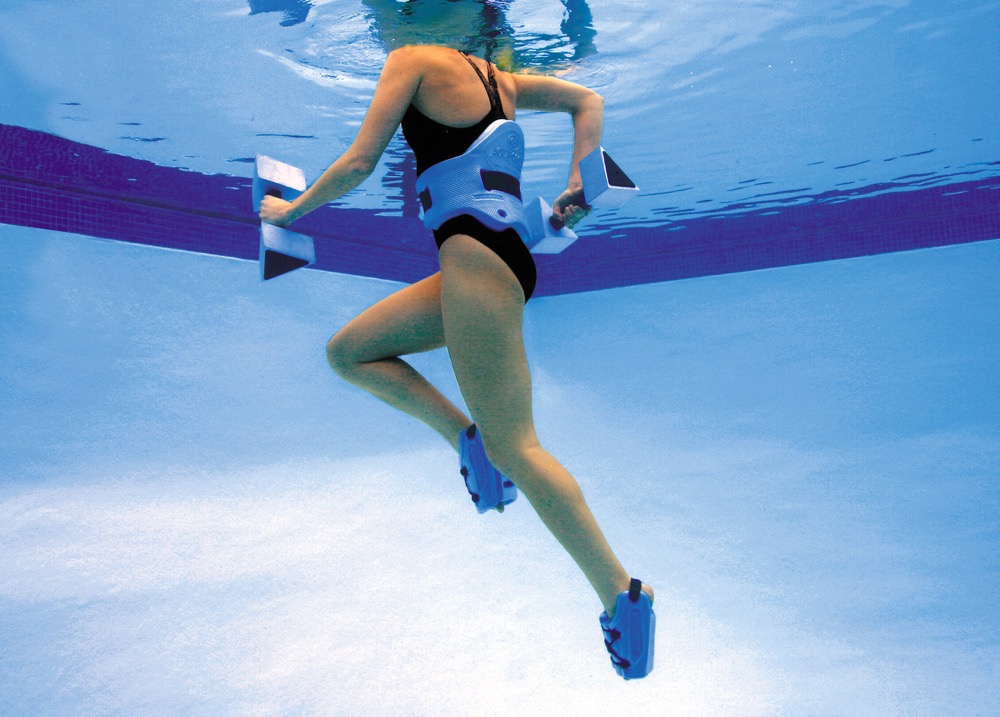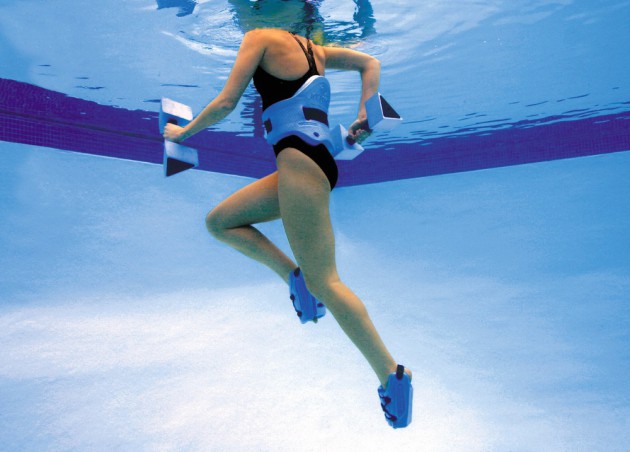By Matthew Schultheis, PT, DPT
Looking back, those years right out of grad school admittedly felt like the golden ones. I was young, settling into a career in sports medicine and was continually working to up my own athletic game, working to reach new heights for myself. Striving to be the physical therapist who not only worked with athletes, but also understood their training challenges, because I faced them, too.
Back then, and still today, I treat a fair amount of endurance athletes.
In those early years, though, I didn’t have any injuries or aches and pains (I should have knocked on wood, I suppose). I could run five or six days each week and never have any problems.
Then, thanks to too much training and a stress injury in my foot after running the Boston Marathon, I found myself needing to discover a better way to train to run, remain injury free, and prepare my body for a life of endurance sport and not just the early golden years.
That’s when I discovered water.
As a physical therapist, I know the benefits of water in therapeutic settings and work with many therapists who prescribe exercises performed in a pool as part of a total treatment plan.
“For an acute sports injury, the pool is beneficial because we can continue to exercise the rest of the patient’s body, while the injured area is healing,” says my colleague, Mike Satterley, PT, DPT, SCS, CIMT, CSCS, CMTPT, Clinical Director at the Oyster Point clinic in Newport News.
This isn’t just foam noodles and scissor kicks in the water. In the last decade, the equipment and techniques used to support aquatic therapy have advanced to include paddles, adaptive devices and submerged treadmills.
As obvious as it may sound, the buoyancy of water is often considered the most beneficial aspect of aquatic therapy.
It’s also the biggest benefit for aqua running, which was the answer I found for myself and training athletes before they get injured. When aqua jogging, your feet don’t actually touch the bottom of the pool, so it is zero impact and safe for almost any type of injury.
On any given week, I now run two days in a row, fit in longer 18 to 22 mile runs on the weekends and then swim, supplementing aqua running into my regimen at minimum one day a week.
Aqua running is exactly like what it sounds. Go to the deep end in a pool and use an aqua running belt/vest to keep your body underwater and head above water and run – not swim – laps. An aqua running belt/vest is a nice tool but, not absolutely necessary. I use a local gym for my routine, as finding a treadmill under water is not always an accessible option for athletes.
Instead of running for distance, run for time. For me, that’s about an hour, which I equate to about four miles.
Skeptical about reaching the same heart rate you would when running on the road? That’s a legit concern for many athletes.
A University of Wisconsin study in 1991 measured the oxygen consumption and heart rate of aqua runners compared to treadmill runners. The aqua runners were not able to achieve the same heart rate as their counterparts on the treadmills, but they were able to achieve the same heart rate or even higher than cycling or other forms of cross training.
Many runners will turn to cycling to continue building endurance after or before an injury. But in doing so, especially for distance runners versus multi-sport athletes, you use different muscle groups.
Aqua running, compared to other cross training options, can help athletes work on their gait mechanics which translates directly to the road on race day. In the pool, you have to concentrate on the position of your core, keeping your shoulders back, pulling your knees higher. While you can emphasize that on the road, as you fatigue during a long run, your form can start to deteriorate, putting you at risk of injury.
For patients, including myself, I “prescribe” aqua running as part of a regular training plan. Utilizing aqua running as a supplement, I believe, will prevent more injuries in more endurance athletes year over year and help keep all of us longer in those golden years of running.
# # #
Matthew Schultheis, PT, DPT is a Clinical Director with Tidewater Physical Therapy at its Midlothian Clinic near Richmond. An accomplished endurance athlete, with a dozen marathons under his belt, Schultheis also treats athletes from all sports and of all ages.








